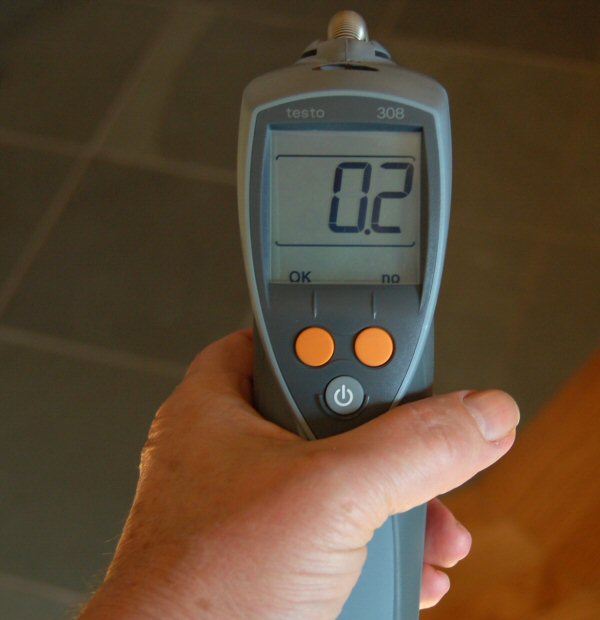
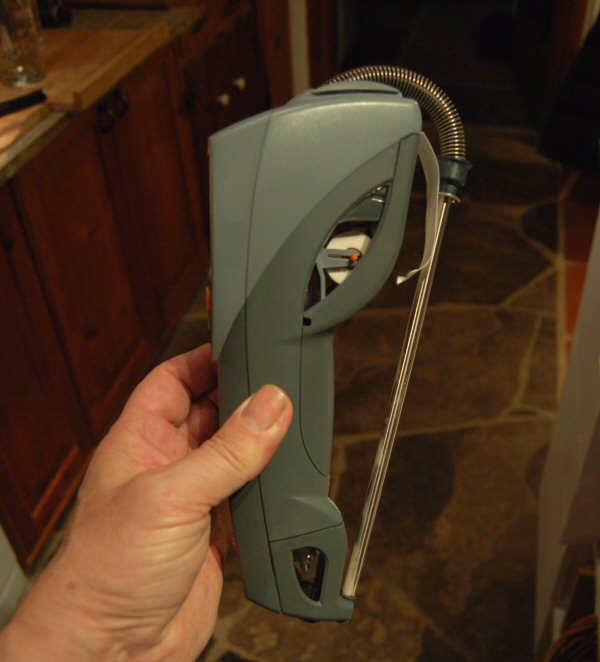
Stainless sample probe is inserted into chimney.
Visible is a white roll of filter paper, which smoke is sucked through to get a smoke spot.
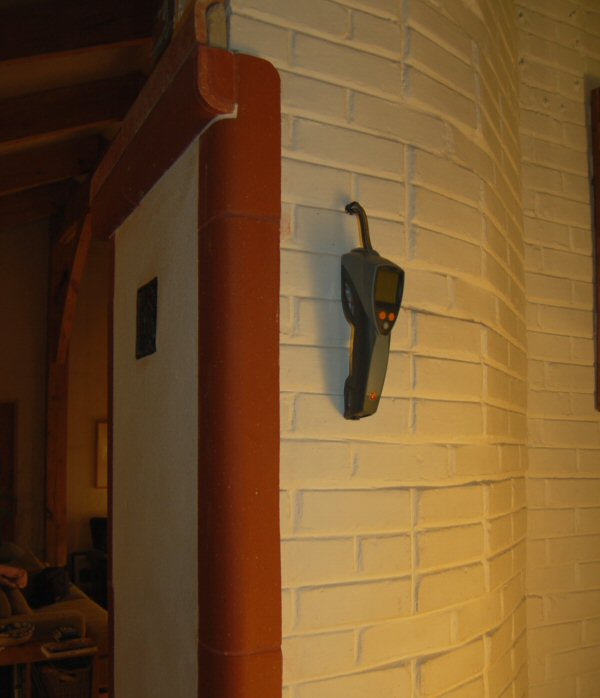
Inserted into chimney

Modified setup, with air dilution.
A half inch copper pipe is inserted first, the length of the probe. By trial and error, it was found
pulling the probe tip back about 1.5", resulted in useable readings.
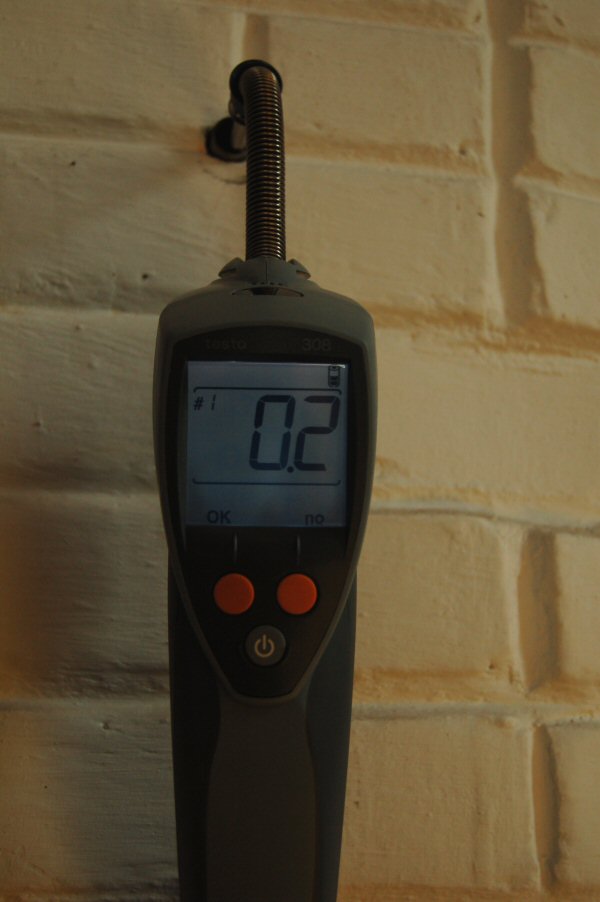
Smoke spot number at 100 minutes.
The pump sucks gas through the filter paper for about 50 seconds.
A photocell then reads the darkness of the spot, and translates it into a smoke spot number.
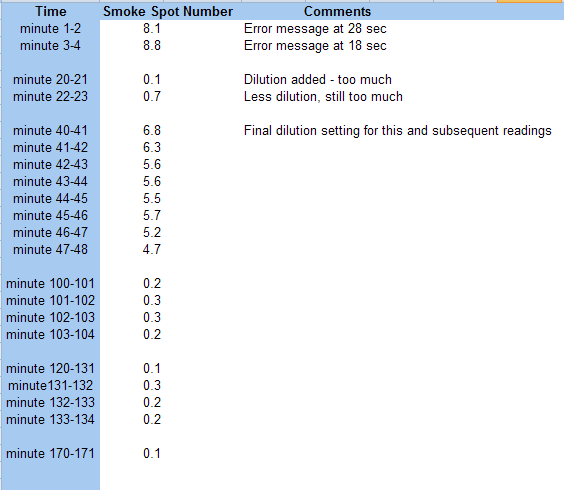
Test Results.
Initially, the pump filled the filter up too fast resulting in an error message.
Dilution was added with the copper tube, as in the previous photo.
The right amount of dilution was determined by trial and error, and then used for the subsequent readings.
Next step will be to add a properly calibrated amount of dilution.

Copper tube inserted into the chimney. The dark area at the left, about 3 inches, shows the insertion into the flue path. It is
about halfway into a 6.5" x 10.5" clay flue liner.
At the right, the probe is marked with a magic marker, to indicate the insertion spot into the copper tube.
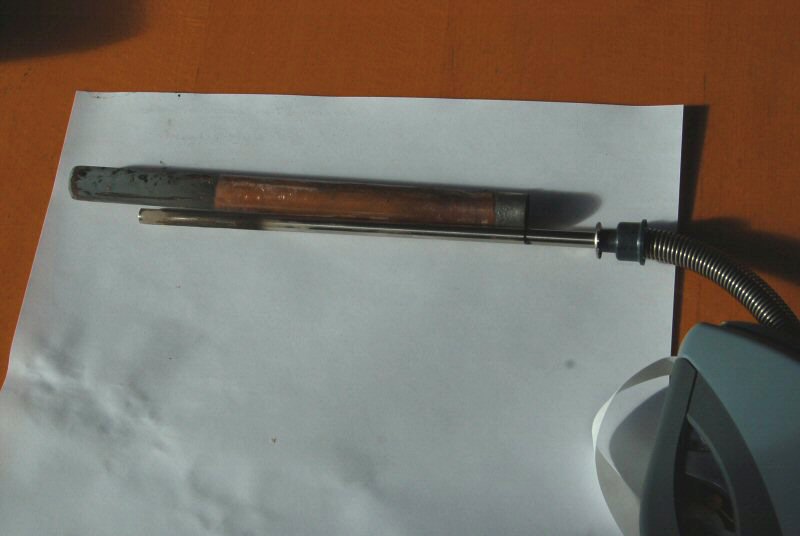
This shows the position of the probe tip, relative to the inlet at the copper pipe.

Second test, Nov 3/09
A smoke spot test was done every three minutes at the beginning,
then every 5 minutes, decreasing to every 15 minutes at the end.
In the third column, values are interpolated, and finally an average is
calculated for the first 120 minutes of the burn.
Download spreadsheet
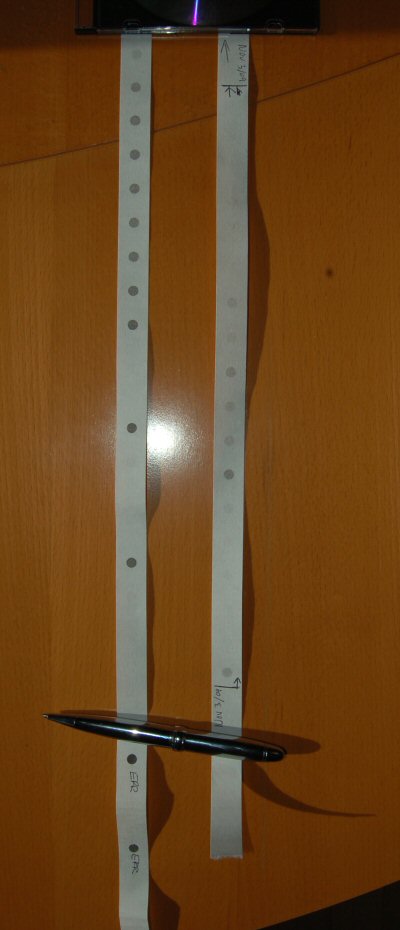
Smoke spot record on the filter paper.
On the left is the first test, progressing from bottom to top.
The two spots below the pen were the initial, undiluted, error readings.
The second test (Nov 3/09) is on the right, progressing from bottom to top.
It is apparent from the smoke spots that this was a cleaner burn than the first one.
The two time lines are not directly comparable, because tests were done at differing intervals.
Conclusions:
This appears to be a viable method to obtain particulate information on masonry heaters.
Previous testing with the Condar has established that the particulates are mainly soot, with virtually no tar.
This appears to have the potential to simplify particulate measurements a great deal.
The technical basis of the soot<>tar divide in woodstove particulates is detailed in a research report
by Dr. Tami Bond et al.
Laboratory testing with the Condar is planned for early January 2010. This will help determine how well
the smoke spot numbers correlate with the Condar number and with the opacity readings.
Testo website
Supplier
Information on the Standard Smoke Spot Test for oil burners
|

